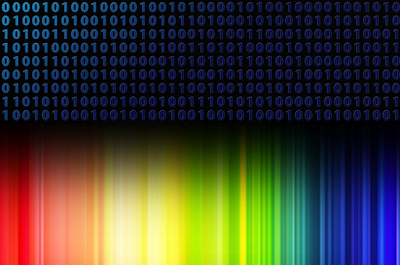Is totally unoccupied TV band considered TV White Space?
In my last blog on "What is TV White Space? Myth and Truth Explained", I posted a question:
"For TV bands / channels totally freed up (i.e., no primary user) after digital switchover, do / can they be considered as TVWS or unlicensed spectrum or they should be licensed out to individual organizations? Which part of the figure above should they belong to? Blue, green or yellow?"
"For TV bands / channels totally freed up (i.e., no primary user) after digital switchover, do / can they be considered as TVWS or unlicensed spectrum or they should be licensed out to individual organizations? Which part of the figure above should they belong to? Blue, green or yellow?"
Just to recap, Blue is licensed spectrum, Yellow is unlicensed spectrum and Green is in between which refers to White Space.
Theoretically, for spectrum that is totally free (unoccupied), it falls in neither of the above or it could be either of them.
Based on cost-benefit analysis of different countries, the respective administration may decide to auction off the spectrum, craft them out as unlicensed spectrum or assign them as white space.
Let me share why assigning them as white space is the best option if there are opposing views from different stakeholders or the regulator could not foresee future demands clearly.
For licensed spectrum, it is very difficult to take back the spectrum, if not impossible, once the license is given out. In case situations change, regulators will have their hands tied to make changes in an agile manner.
A side note: it'd be interesting for the readers to read the incentive auction carried out by FCC which is quite a non-conventional way of 'repurposing' the spectrum.
In contrast, once the regulator decides to assign the spectrum as unlicensed. There are likely to have millions of devices accessing the spectrum. Again, when situations change that require the regulator to act quickly to relocate the spectrum, there will be many legacy issues to settle.
With white space, the regulator maintains the best of both worlds. The regulator could allocate spectrum to white space devices even when there are no licensed primary users. The difference between this approach compared to unlicensed spectrum is the regulator could allocate the spectrum to licensed users in the future with guarantee that white space devices will avoid interfering with the primary users even if it is not done from the beginning, i.e., future proof.
With this flexibility, regulators could move ahead with policies to maximize spectrum usage without having to go through long regulatory processes. Countries such as India will be able to move forward to utilize their currently underutilized TV bands to benefit the unconnected rural areas, thus, achieving the Digital India initiative spearheaded by their Prime Minister Modi. Spectrum is a natural resource that should be used to benefit the people!
In fact, I'd argue that this is the first step towards "Digital Regulator". In a world where many things turned digital and grew at Moore's Law speed. Why can't regulators also innovate in regulations?
In my next article, I will discuss briefly on "Digital Regulator". Stay tune!
Pls feel free to share or repost this article although the original copyright remains with Whizpace Pte Ltd.



I Think unoccupied spectrum in TV bands is that, a portion of spectrum that it is intended to be licenced to a primary user . its diferent from the concep of DSA.
ReplyDeleteDigital Regulator? Cognitive Regulator sounds better . cheers
Thanks Struminator for the comment. If the unoccupied spectrum is intended to be licensed to a primary user and does not allow secondary users, then it's not a white space but a licensed spectrum just like 3G and 4G. My key point was what happen if the regulator is unsure or need flexibility in the future. If that's the case, then making the spectrum white space will be more future proof.
ReplyDelete